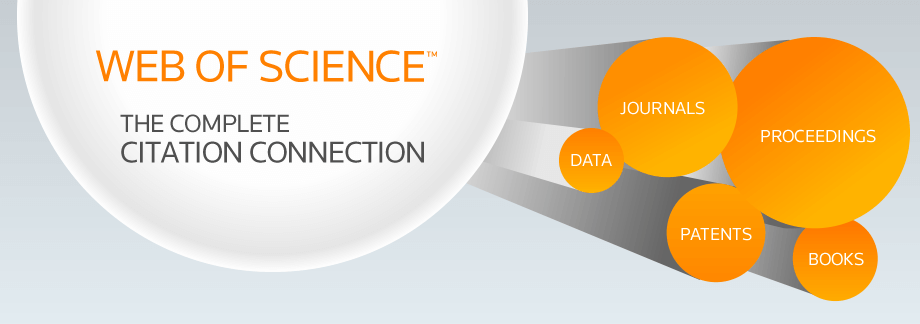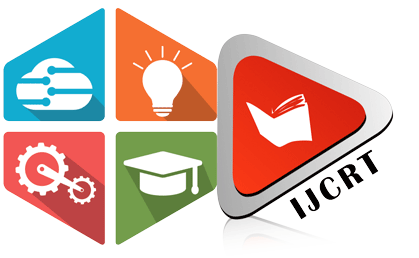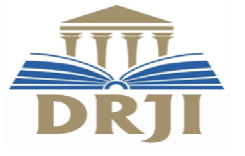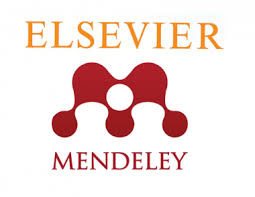INTERNATIONAL JOURNAL OF CREATIVE RESEARCH THOUGHTS - IJCRT (IJCRT.ORG)
International Peer Reviewed & Refereed Journals, Open Access Journal
IJCRT Peer-Reviewed (Refereed) Journal as Per New UGC Rules.
ISSN Approved Journal No: 2320-2882 | Impact factor: 7.97 | ESTD Year: 2013
Call For Paper - Volume 13 | Issue 11 | Month- November 2025
Scholarly open access journals, Peer-reviewed, and Refereed Journals, Impact factor 7.97 (Calculate by google scholar and Semantic Scholar | AI-Powered Research Tool) , Multidisciplinary, Monthly, Indexing in all major database & Metadata, Citation Generator, Digital Object Identifier(CrossRef DOI)
Contact Us Click Here
WhatsApp Contact Click Here
Volume 12 | Issue 11
| IJCRT Journal front page | IJCRT Journal Back Page |
Paper Title: AI can act as Catalyst for Viksit Bharat
Publisher Journal Name: IJCRT
Your Paper Publication Details:
Published Paper ID: - IJCRT2411864
Register Paper ID - 271131
Title: AI CAN ACT AS CATALYST FOR VIKSIT BHARAT
Author Name(s): Dr. Arpita Nagpal, Ms. Sania Kukkar
Publisher Journal name: IJCRT
Volume: 12
Issue: 11
Pages: h792-h797
Year: November 2024
Downloads: 229
Abstract
The Indian government's vision to transform the nation into a developed economy by 2047, encapsulated in the Viksit Bharat 2047 Plan, can be significantly advanced through Artificial Intelligence (AI). This paper explores AI's transformative impact across key sectors, including digital governance, education, agriculture, and public welfare. Notable applications such as Digiyatra streamline aviation processes, while AI-driven platforms enhance educational inclusivity and provide real-time translation, mitigating geographical and linguistic barriers. Sector-specific tools like KissanGPT support agriculture by delivering critical information to farmers, and PolicyGPT simplifies complex health insurance policies for consumers. Government initiatives, including Pradhan Mantri Garib Kalyan Anna Yojana and the "One Nation One Ration Card" scheme, demonstrate AI's effectiveness in improving service delivery and managing resources efficiently. Additionally, the paper addresses the importance of bridging the skill gap to prepare the workforce for an AI-driven job market, highlighting projections of a 40% increase in AI and machine learning roles by 2027 from the World Economic Forum. By aligning technological advancements with national development goals, AI is positioned as a crucial element in realizing the Viksit Bharat vision by 2047, as emphasized by Prime Minister Narendra Modi.
Licence: creative commons attribution 4.0
License
Keywords
AI Integration, Innovation Ecosystem, AI Ethics, Digital Economy, Smart Cities.
License
Paper Title: INNOVATIVE HERBAL DRUG DELIVERY SYSTEM
Publisher Journal Name: IJCRT
Your Paper Publication Details:
Published Paper ID: - IJCRT2411863
Register Paper ID - 273334
Title: INNOVATIVE HERBAL DRUG DELIVERY SYSTEM
Author Name(s): Mr.Mate Vaibhav Sudhakar, Miss.Ashwini.S. Chandile, Miss.Gangasagar.V.Malode, Mr.Mangesh.J.Maind, Miss.Megha.M.Maher
Publisher Journal name: IJCRT
Volume: 12
Issue: 11
Pages: h779-h791
Year: November 2024
Downloads: 152
Abstract
Advancements in herbal formulations, utilizing advanced delivery systems like polymeric nanoparticles, liposomes, phytosomes, and transfersomes, have significantly improved the effectiveness of plant-based medicines. These novel systems enhance solubility, bioavailability, and stability, protect against toxicity and degradation, and provide sustained release and better pharmacological effects. A key innovation is Phytosome technology, which combines phospholipids with plant extracts to create lipid-compatible complexes that boost bioavailability and stability. Recent research highlights the advantages of modern drug delivery systems (NDDS) in herbal medicine, showcasing improved therapeutic outcomes compared to traditional methods. These systems, including liposomes and solid lipid nanoparticles, enhance absorption and bioavailability. While challenges in extraction and standardization of herbal medicines have previously hindered innovation, the rise of herbal excipients--affordable, biodegradable, and stable plant-derived compounds--has enabled more effective delivery systems. These innovations are particularly beneficial in addressing common health issues and enhancing treatments, including more effective anticancer therapies, underscoring the potential of herbal medicines in modern medicine.
Licence: creative commons attribution 4.0
License
Keywords
INNOVATIVE HERBAL FORMULATION TECHNOLOGIES, HERBAL COMPOUND NANOENCAPSULATION,PRECISE PHYTOCHEMICAL TARGETED DELIVERY , INTELLIGENT HERBAL DRUG CARRIERS, SUSTAINED RELEASE SYSTEM FOR HERBAL MEDICINES
License
Paper Title: TEACHER EDUCATORS PERCEPTION TOWARDS USAGE OF SMART BOARDS
Publisher Journal Name: IJCRT
Your Paper Publication Details:
Published Paper ID: - IJCRT2411862
Register Paper ID - 273332
Title: TEACHER EDUCATORS PERCEPTION TOWARDS USAGE OF SMART BOARDS
Author Name(s): DR PRADEEP KUMAR T
Publisher Journal name: IJCRT
Volume: 12
Issue: 11
Pages: h772-h778
Year: November 2024
Downloads: 167
Abstract
Technology benefited us in every aspect of our life right from communication to education. New methods of teaching have been introduced which is known as smart board technology. In this aspect the present study holds importance. The objectives of the study were to find whether there is any significant difference in the perception towards usage of smart boards among male and female teacher educators and teacher educators belonging to private and government Institutions. Samples of 150 Teacher educators belonging to B.Ed colleges, Karnataka during the academic year 2024-2025 were selected. Data pertaining to the usage of smart boards were collected through stratified random sampling techniques through survey method. The tool used for the present study was smart board scale developed by Manjunath (2022) was adopted. The researcher visited the B.Ed colleges personally and it order to collect the data. The tools were administered to the selected samples under normal conditions. The separate variance model of t-test was used for testing the hypotheses for the significance of mean difference in the usage of smart boards' scores of various groups was compared. Findings revealed that Male and female teacher educators differ statistically in their perception towards usage of smart boards. Comparing to the mean values of male teacher educators [1.4492] is greater than female teacher educators [1.3870]. Hence male teacher educators have more perception towards usage of smart boards. Teacher educators belonging to government and private Institutions differ statistically in their perception towards usage of smart boards. Comparing to the mean values of teacher educators belonging to Private Institutions (1.4254) is greater than that of teacher educators belonging to government Institutions (1.3886). Hence teacher educators belonging to private Institutions has more perception towards usage of smart boards.
Licence: creative commons attribution 4.0
License
Keywords
Teacher Educators, Technology, Smart boards, ICT
License
Paper Title: Predictive Modeling Of Soil Nutrient Content Using Mir Spectroscopy And Advanced Machine Learning Techniques
Publisher Journal Name: IJCRT
Your Paper Publication Details:
Published Paper ID: - IJCRT2411861
Register Paper ID - 273240
Title: PREDICTIVE MODELING OF SOIL NUTRIENT CONTENT USING MIR SPECTROSCOPY AND ADVANCED MACHINE LEARNING TECHNIQUES
Author Name(s): Tushar Minche, Vishal Ingale, Shubham Zarekar, Prof. Darshna Bhamare, Prof. Milind AnkleshwarS
Publisher Journal name: IJCRT
Volume: 12
Issue: 11
Pages: h766-h771
Year: November 2024
Downloads: 162
Abstract
This project focuses on creating a predictive model for soil nutrient content by integrating MIR (Mid-Infrared) spectroscopy with advanced machine learning techniques. The objective is to enhance the accuracy, scalability, and affordability of soil nutrient analysis, which is pivotal for precision agriculture. This integration promises to provide a real-time, accessible solution that addresses existing gaps in traditional soil testing and contributes to sustainable farming practices.
Licence: creative commons attribution 4.0
License
Keywords
Predictive Modeling, Soil Nutrient, MIR Spectroscopy
License
Paper Title: How Artificial Intelligence And Machine Learning Reduces Global Challenges Faced In Medicine And Healthcare
Publisher Journal Name: IJCRT
Your Paper Publication Details:
Published Paper ID: - IJCRT2411860
Register Paper ID - 273312
Title: HOW ARTIFICIAL INTELLIGENCE AND MACHINE LEARNING REDUCES GLOBAL CHALLENGES FACED IN MEDICINE AND HEALTHCARE
Author Name(s): Jiya Doshi
Publisher Journal name: IJCRT
Volume: 12
Issue: 11
Pages: h761-h765
Year: November 2024
Downloads: 193
Abstract
The global healthcare system is currently grappling with critical challenges, primarily due to a shortage of skilled medical professionals and an uneven distribution of medical resources. This deficiency is exacerbated in underdeveloped regions, leading to delayed diagnoses and treatments, as well as elevated mortality rates. High-profile crises, such as the COVID-19 pandemic, highlighted these systemic issues, demonstrating the urgent need for a more robust and equitable healthcare framework. To mitigate these challenges, the integration of Artificial Intelligence (AI) and Machine Learning (ML) into healthcare systems is proposed. The global healthcare AI market is expected to reach $188 billion by 2030, addressing the anticipated shortfall of nearly 10 million healthcare workers worldwide. AI offers significant potential benefits, including improved patient outcomes, reduced healthcare costs, and enhanced public health management. By leveraging advanced technologies, the healthcare sector can better navigate the evolving demands and complexities of modern medicine.
Licence: creative commons attribution 4.0
License
Keywords
Artificial Intelligence, Machine Learning, Medicine
License
Paper Title: Types Of Chemotherapy In Cancer
Publisher Journal Name: IJCRT
Your Paper Publication Details:
Published Paper ID: - IJCRT2411859
Register Paper ID - 272315
Title: TYPES OF CHEMOTHERAPY IN CANCER
Author Name(s): Molaka Sphurthy Mitra, J.Divya devi
Publisher Journal name: IJCRT
Volume: 12
Issue: 11
Pages: h748-h760
Year: November 2024
Downloads: 153
Abstract
Cancer is the second most common cause of death in US accounting for 1 in 4 deaths.Cancer is a condition in which some of the body cells uncontrollably grow and spread all over the body.It can start anywhere in the body.Generally chemotherapy along with the cancer agents are used to reduce the growth of malignant cells.This therapy may be used to cure and produce palliative relief to patient and increase the quality of patient life.The importance of chemotherapy for cure of cancer is increasing especially with its use as adjuvants to local therapy. Cancer is the uncontrollable growth of cells that are abnormal everywhere in the body- cancer cell. It is also called as the malignancy. The causative agents are - chemicals, toxic compounds , exposures, ionizing radiation and some pathogens.Most of the cancers forms tumors but not all the tumors are cancerous. Cancer is treated by different types of chemotherapies, radiation and surgery. General terms are : benign and malignant.whereas the benign are non cancerous tumors and malignant s are cancerous tumors.
Licence: creative commons attribution 4.0
License
Keywords
Chemotherapy, cancer treatment, oncology, pharmacology, antineoplastic therapy
License
Paper Title: The Role of Social Media in Shaping the Social Identity and Emotional Well-Being of Adolescents
Publisher Journal Name: IJCRT
Your Paper Publication Details:
Published Paper ID: - IJCRT2411858
Register Paper ID - 273309
Title: THE ROLE OF SOCIAL MEDIA IN SHAPING THE SOCIAL IDENTITY AND EMOTIONAL WELL-BEING OF ADOLESCENTS
Author Name(s): ENNA RANI, DR. PALLAVI SETH
Publisher Journal name: IJCRT
Volume: 12
Issue: 11
Pages: h743-h747
Year: November 2024
Downloads: 165
Abstract
Social media has emerged as a dominant force in adolescents' lives, significantly influencing how they perceive themselves and interact with others. This paper explores the dual impact of social media on adolescents' social identity and emotional well-being. While it fosters self-expression, connectivity, and inclusivity, it also contributes to challenges such as social comparison, cyberbullying, and mental health issues. Using a mixed-methods approach, the study examines the nuances of this relationship, offering recommendations to leverage the positive aspects of social media while minimizing its risks.
Licence: creative commons attribution 4.0
License
Keywords
Social media, Adolescents, Social identity, Emotional well-being, Cyberbullying, Self-expression
License
Paper Title: A Smart Approach To Project Management: Automating Workflows With AIML
Publisher Journal Name: IJCRT
Your Paper Publication Details:
Published Paper ID: - IJCRT2411857
Register Paper ID - 272149
Title: A SMART APPROACH TO PROJECT MANAGEMENT: AUTOMATING WORKFLOWS WITH AIML
Author Name(s): Mrs. Sampada Kulkarni, Akshata Vishal Dongaonkar, Om Santosh Auti, Omkar Rajesh Adke
Publisher Journal name: IJCRT
Volume: 12
Issue: 11
Pages: h736-h742
Year: November 2024
Downloads: 156
Abstract
In today's dynamic work environments, the management of complex projects involving diverse stakeholders--employees, managers, and clients--presents considerable challenges. Traditional project management tools often exhibit limitations in real-time adaptability, intelligent task prioritization, and seamless transparency. These deficiencies lead to inefficiencies, communication breakdowns, and project delays. Additionally, the inability to effectively automate workflows exacerbates issues such as bottlenecks, missed deadlines, and employee burnout. This paper addresses the need for a more sophisticated project management solution that incorporates artificial intelligence (AI) and machine learning (ML) technologies. By integrating AI/ML, the proposed system aims to enhance real-time decision-making, automate task assignments based on priority, and foster greater transparency and collaboration among all stakeholders.
Licence: creative commons attribution 4.0
License
Keywords
Project automation, AI/ML, task assignment, workflow creation, progress tracking, transparency, productivity, real-time communication.
License
Paper Title: Tackling Distractions In Online Learning Through Gamified Educational Platform
Publisher Journal Name: IJCRT
Your Paper Publication Details:
Published Paper ID: - IJCRT2411856
Register Paper ID - 273077
Title: TACKLING DISTRACTIONS IN ONLINE LEARNING THROUGH GAMIFIED EDUCATIONAL PLATFORM
Author Name(s): Sampada Kulkarni, Avneesh Deshmukh, Mihika Saraf, Kedar Chikane, Soham Rane
Publisher Journal name: IJCRT
Volume: 12
Issue: 11
Pages: h725-h735
Year: November 2024
Downloads: 154
Abstract
Technology has advanced rapidly in recent years. This has been a godsend for the people, making their lives easier. The advancement of technology has a significant impact on students. This has revolutionised the way students learn, providing them with access to vast amounts of information and resources. Remote study is now possible for anyone who has a digital device like a mobile or a laptop and an internet connection. While technology has many benefits for students, it can also be a major source of distraction. The constant influx of notifications and updates might make concentrating on activities and assignments difficult. When working on a laptop, multitasking is simple, such as flipping between tabs for different purposes or opening undesired applications during productive time. This takes up most of the student's considerable time, which could be better spent studying and learning. To address the challenge of distractions and disengagement in online learning, we propose a gamified educational web application that combines video lessons with interactive quizzes. Our platform is designed to enhance student focus, motivation, and retention by incorporating game-like elements such as rewards, progress tracking, and leaderboards. This solution aims to change how students engage with online educational content by creating a more interesting learning experience. By embedding quizzes within the video content and rewarding focused engagement, the application keeps learners actively involved and motivated throughout their educational journey. This innovative approach is aimed at improving focus, retention, and overall academic performance, offering a dynamic learning environment that not only helps students manage distractions but also enhances the quality of online education. The solution is poised to benefit students, educators, and institutions alike, potentially reshaping the future of e-learning. Our approach with this gamified educational platform is significant because it addresses a key issue that many existing online learning solutions fail to tackle: student engagement and focus. Traditional e-learning platforms provide access to content but often overlook how students interact with that content, especially when they are bombarded with distractions. By embedding quizzes directly within the video lessons, we ensure that students stay actively involved rather than passively consuming information. This solution has the potential to extend its impact beyond individual students, transforming how educational institutions deliver online content by making it more interactive, engaging, and tailored to student needs.
Licence: creative commons attribution 4.0
License
Keywords
technology advancement, online learning, remote study, distractions, multitasking, gamified, interactive quizzes, retention, active learning, e-learning, student-centred education
License
Paper Title: Deep Learning-Based Skin Disease Detection and Classification
Publisher Journal Name: IJCRT
Your Paper Publication Details:
Published Paper ID: - IJCRT2411855
Register Paper ID - 272416
Title: DEEP LEARNING-BASED SKIN DISEASE DETECTION AND CLASSIFICATION
Author Name(s): Venkey.Pothireddy
Publisher Journal name: IJCRT
Volume: 12
Issue: 11
Pages: h714-h724
Year: November 2024
Downloads: 149
Abstract
Skin diseases pose a significant health concern worldwide, affecting millions of individuals. The accurate and timely diagnosis of these conditions is critical for effective treatment. This project presents a robust solution for skin disease classification using deep learning techniques, specifically the VGG16 architecture, implemented in MATLAB. The primary objective of this research is to develop a highly accurate and efficient model for the automated classification of skin diseases. The dataset used in this project is composed of five distinct classes of skin diseases, including Acne-cystic acne, biting fleas, diabetic blisters, spider bites, and vitiligo. Each class is carefully curated to represent a wide range of skin conditions, making the model versatile and capable of handling various dermatological challenges. The VGG16 architecture, a well-established convolutional neural network (CNN) model, is employed for its remarkable feature extraction capabilities. Transfer learning is applied to fine-tune the pre-trained VGG16 model on the skin disease dataset. The model is trained, validated, and tested using a rigorous cross-validation approach to ensure its reliability. One of the standout achievements of this project is the exceptional classification accuracy obtained. The model demonstrates an impressive accuracy of 98.08%, signifying its effectiveness in accurately identifying and classifying skin diseases. This high accuracy rate is crucial in reducing misdiagnoses and enhancing the overall quality of patient care. In addition to its high accuracy, the proposed system also offers real-time skin disease classification, making it a valuable tool for medical professionals and dermatologists. The user-friendly interface developed in MATLAB ensures ease of use and accessibility, allowing healthcare practitioners to make informed decisions swiftly and accurately. In summary, this project presents a comprehensive approach to skin disease classification using deep learning techniques, with a focus on the VGG16 architecture. The achieved accuracy of 98.08% demonstrates the model's capability to accurately classify various skin diseases, thus aiding in early diagnosis and effective treatment. This research contributes to the advancement Generalization to Real-World Settings: Models that perform well in controlled research settings may not always generalize effectively to real-world clinical environments. Differences in lighting, camera quality, and patient demographics can all affect the performance of skin disease classification models. Robust validation on diverse, real-world datasets is essential for successful deployment in clinical practice(ar5iv). Future Directions and Clinical Applications As deep learning models continue to evolve, several promising directions are emerging in skin disease classification research: Mobile Health Applications: With the increasing availability of smartphones equipped with high-resolution cameras, there is growing interest in developing mobile applications for skin disease detection. These apps can allow users to capture images of skin lesions and receive instant analysis, making early detection more accessible to the general public(SpringerOpen).Teledermatology: AI-powered teledermatology platforms are being developed to diagnose remote skin disease, particularly in underserved areas. By integrating deep learning models with telemedicine platforms, healthcare providers can offer more timely and efficient care to patients who may not have access to in-person dermatological services(SpringerLink)(ar5iv). Improved Model Interpretability: Future research will likely focus on enhancing the explainability of deep learning models to increase their acceptance among clinicians. Techniques like Grad-CAM (Gradient-weighted Class Activation Mapping) can help visualize which parts of the image influenced the model's decision, providing insights into the underlying reasoning behind each prediction(ar5iv) Key Words: Skin disease, Convolutional Neural Network, Random Forest, Feature Extraction, Deep Learning.
Licence: creative commons attribution 4.0
License
Paper Title: The Inner and Outer World: A Metaphorical Exploration in Arthur Miller's All My Sons through the Allegorized Character of Joe Keller
Publisher Journal Name: IJCRT
Your Paper Publication Details:
Published Paper ID: - IJCRT2411853
Register Paper ID - 273253
Title: THE INNER AND OUTER WORLD: A METAPHORICAL EXPLORATION IN ARTHUR MILLER'S ALL MY SONS THROUGH THE ALLEGORIZED CHARACTER OF JOE KELLER
Author Name(s): Dr Pawan Kumar Sharma
Publisher Journal name: IJCRT
Volume: 12
Issue: 11
Pages: h686-h692
Year: November 2024
Downloads: 156
Abstract
Abstract: Arthur Miller (1915-2005), a celebrated dramatist of 20th-century American literature, is a distinguished and profound social critic of contemporary social evils. Through his moralistic play, All My Sons, Miller has conveyed the theme of social responsibility through the allegorized tragic protagonist, Joe Keller, the killer of 21 American pilots. Miller emphasizes that one should not forfeit or sell one's conscience for personal and family benefit. Miller has investigated the philosophy of a man, Joe Keller, a member of the representative American everyman, as a dishonest and self-centered manufacturer selling his ethics for worldly consideration, who puts his responsibilities above those of society. Joe considers that his rightful position in his society is to be a good husband and a good father. Yet, he commits an awful offense against the outer world. His perverted priorities blind his conscience and weaken his judgment. The fact cannot be denied that "Chris, a man can't be Jesus in this world", but he must preserve some ethical values that secure society.
Licence: creative commons attribution 4.0
License
Keywords
Self-realization, dishonesty, identity crisis, allegory, and tragedy.
License
Paper Title: Baru Chandidas's Sri Krishna Kirtan: Tradition, Reconstruction, and Modern Relevance
Publisher Journal Name: IJCRT
Your Paper Publication Details:
Published Paper ID: - IJCRT2411852
Register Paper ID - 272948
Title: BARU CHANDIDAS'S SRI KRISHNA KIRTAN: TRADITION, RECONSTRUCTION, AND MODERN RELEVANCE
Author Name(s): Dr. Md Siddique Hossain
Publisher Journal name: IJCRT
Volume: 12
Issue: 11
Pages: h680-h685
Year: November 2024
Downloads: 203
Abstract
Baru Chandidas's Sri Krishna Kirtan: Tradition, Reconstruction, and Modern Relevance
Licence: creative commons attribution 4.0
License
Keywords
Baru Chandidas's Sri Krishna Kirtan: Tradition, Reconstruction, and Modern Relevance
License
Paper Title: INNOVATIVE PROTECTION OF VALUABLE TREES FROM SMUGGLING USING RFID AND SENSORS
Publisher Journal Name: IJCRT
Your Paper Publication Details:
Published Paper ID: - IJCRT2411851
Register Paper ID - 272574
Title: INNOVATIVE PROTECTION OF VALUABLE TREES FROM SMUGGLING USING RFID AND SENSORS
Author Name(s): Kotha Shruthi, Ketha Punarvi Rochisha, Uppari Naveena, K Uma Rani
Publisher Journal name: IJCRT
Volume: 12
Issue: 11
Pages: h674-h679
Year: November 2024
Downloads: 153
Abstract
Illegal logging and tree smuggling have profound ecological, economic, and social repercussions, ranging from habitat destruction and loss of biodiversity to undermining local economies and exacerbating climate change. This project proposes an innovative system leveraging advanced technology to combat these challenges effectively. The system integrates Radio Frequency Identification (RFID), sensors including DHT11 (temperature and humidity), fire sensors, IR sensors, an RFID reader, and Wifi connectivity. The primary objective of the system is to track and protect valuable trees throughout their journey from origin to destination. RFID tags are embedded in trees for real-time identification and tracking. Conventional enforcement methods often fall short due to the vast and remote nature of forested areas where these activities occur. Data from these sensors are transmitted via Wifi to a centralized monitoring system, enabling continuous surveillance and immediate response to anomalies. By employing this integrated approach, stakeholders can enhance traceability, prevent illegal activities, and ensure the sustainable management of valuable tree species.
Licence: creative commons attribution 4.0
License
Keywords
Tree Smuggling , Prevention Valuable Tree Protection, RFID-Based Monitoring,Forestry Anti-Poaching Technology, Forest Conservation with Sensors, Smart Forestry Solutions, Environmental Protection Technology, Wireless Sensor Networks in Forests, Real-Time Tree Tracking,.
License
Paper Title: The Effect Of Loneliness and Self-Efficacy Among Adolescent Students In Terms Of Their Levels Of Depression (At Risk, Vulnerable And Non-depressed)
Publisher Journal Name: IJCRT
Your Paper Publication Details:
Published Paper ID: - IJCRT2411850
Register Paper ID - 272932
Title: THE EFFECT OF LONELINESS AND SELF-EFFICACY AMONG ADOLESCENT STUDENTS IN TERMS OF THEIR LEVELS OF DEPRESSION (AT RISK, VULNERABLE AND NON-DEPRESSED)
Author Name(s): Dr. Shrabani Mukherjee (Chattopadhyay)
Publisher Journal name: IJCRT
Volume: 12
Issue: 11
Pages: h664-h673
Year: November 2024
Downloads: 147
Abstract
Abstract In today's changing environment life has become a rat race. Hence, depression and stress related problems have become lifestyle diseases. Depression has significant relationship with loneliness and self efficacy. Objective- Examining the consequences of depression among adolescent students and its effect on loneliness and self efficacy, the present study has focused on The Effect Of Loneliness and Self-Efficacy Among Adolescent Students In Terms Of Their Levels Of Depression (At Risk, Vulnerable And Non-depressed) Method A group of 150 higher secondary students from 2 schools in murshidabad district of West Bengal were drawn equiproportionally from two stream of education ( Science stream and Humanities stream ). They were selected randomly. The sample of present study was categorized under 3 levels of depression i.e. non-depressed, vulnerable and at risk by administering WHO Depression symptom checklist and Beck Depression Inventory. Conclusion The level of loneliness and self efficacy among adolescent students does not differ significantly in terms of their level of depression (at risk, vulnerable and non-depressed).
Licence: creative commons attribution 4.0
License
Keywords
Key words- Depression, loneliness, Depression symptom checklist , Depression Inventory, Self-efficacy.
License
Paper Title: Vehicle Accident Prevention System
Publisher Journal Name: IJCRT
Your Paper Publication Details:
Published Paper ID: - IJCRT2411849
Register Paper ID - 273308
Title: VEHICLE ACCIDENT PREVENTION SYSTEM
Author Name(s): Prof. Rohan Shinde, Yash Choudhary, Yash Kokade, Ritika Shanbhag, Pranav Ragunath
Publisher Journal name: IJCRT
Volume: 12
Issue: 11
Pages: h659-h663
Year: November 2024
Downloads: 146
Abstract
Abstract: This study focuses on developing an advanced accident prevention system tailored for mountain roads, which are characterized by hazardous terrain, sharp curves, and unpredictable weather. The system uses infrared (IR) sensor technology to identify vehicles and obstacles in real time, especially from blind spots. IR sensors are strategically deployed along the road to detect potential hazards, and a microcontroller processes the data to activate a warning system comprising visual and auditory alerts. Tested under diverse weather conditions, the system achieved 95% accuracy in hazard detection and driver notification, showcasing its effectiveness in mitigating accidents. The cost-effective design, devoid of complex components like LCDs, ensures broad applicability and accessibility. This innovation offers a promising solution to enhance safety on mountain roads, potentially saving lives and reducing risks.
Licence: creative commons attribution 4.0
License
Keywords
Index Terms - Ultrasonic sensors, hazard detection, accident prevention, warning system, microcontroller, mountain road safety, driver awareness.
License
Paper Title: SMART SOIL DETECTION WITH PSEUDO RGB COLOR MATCHING ON MACHINE LEARNING TRAINED FEATURE
Publisher Journal Name: IJCRT
Your Paper Publication Details:
Published Paper ID: - IJCRT2411848
Register Paper ID - 273248
Title: SMART SOIL DETECTION WITH PSEUDO RGB COLOR MATCHING ON MACHINE LEARNING TRAINED FEATURE
Author Name(s): Mr.A.Yasar Arafath
Publisher Journal name: IJCRT
Volume: 12
Issue: 11
Pages: h649-h658
Year: November 2024
Downloads: 140
Abstract
Agriculture is the most stream on which ranchers depend. Numerous overviews have demonstrated that low rate of agriculturists is proliferate over a long time. The most reasons for the increment in soil crop fertility loss are climate conditions, obligations, need of points of interest around the soil. In a few farther regions agriculturists need data almost soil quality, soil supplements, soil composition and may select off-base edit to sow which comes about in less abdicate. So as to overcome the issues confronted by ranchers we are attempting to actualize a demonstrate utilizing with pseudo color matching system with trained features classification of Artificial Neural Networks (ANN) and Random Forest which predicts the soil quality taking input as a few critical parameters related to soil. This paper basically centers on anticipating the crop abdicate utilizing the ANN combined with Random Forest which is totally a program arrangement additionally prescribes appropriate fertilizers to pick up tall surrender of crops. Soil pictures are captured with the assistance of Smartphone and store all the pictures as soil dataset. Soil pictures are prepared through the diverse steps of advanced picture preparing counting soil picture upgrade, soil picture segmentation, and soil picture highlight extraction. Amid the highlight extraction, Tone, Immersion and Esteem of the soil picture are calculated with store Immersion and Tone additionally Immersion as an file for the include vector of the soil pictures. Expectation of soil pH is done with the assistance pseudo color matching system of Straight Relapse, Neural network, and Random Forest Relapse. The coefficient of the straight relapse is 0.859 for the Immersion include of the soil picture. The relapse coefficient of KNN is 0.89326 for K=5 with an RMSE esteem 0.1311. It is found that ANN continuously gives distant better; a much better; a higher; a stronger; an improved" an improved result as compare to another one.
Licence: creative commons attribution 4.0
License
Keywords
Ranchers, soil supplements, pseudo color matching, Artificial Neural Network, Random Forest, Critical Parameters, random Forest, store immersion, relapse.
License
Paper Title: DESIGN, TESTING, AND VALIDATION OF AN ELECTRIC VEHICLE USING SIMULATION SOFTWARE'S
Publisher Journal Name: IJCRT
Your Paper Publication Details:
Published Paper ID: - IJCRT2411847
Register Paper ID - 273290
Title: DESIGN, TESTING, AND VALIDATION OF AN ELECTRIC VEHICLE USING SIMULATION SOFTWARE'S
Author Name(s): Kajal Salindar Chothe, Sarthak Sunil Mane, Dr. Manjusha Sham Patil
Publisher Journal name: IJCRT
Volume: 12
Issue: 11
Pages: h632-h648
Year: November 2024
Downloads: 209
Abstract
An electric vehicle (EV) will be designed using CATIA software, and its performance will be optimized through simulation using IPG Car-maker. The goal is to develop a high-performance electric vehicle especially for racetrack environments. Finding the ideal balance between structural integrity, power-train efficiency, and aerodynamics is the main goal of the design process. Following the original design, Car-maker simulations are used to test and confirm the performance of the vehicle under various racing circumstances virtually. These simulations aid in the fine-tuning of elements like handling, energy consumption, and vehicle dynamics to guarantee that the EV satisfies demanding performance requirements appropriate for professional racing.
Licence: creative commons attribution 4.0
License
Keywords
CATIA , IPG Car-Maker, MATLAB
License
Paper Title: Legal And Regulatory Challenges of Non- Fungible Tokens (NFT)
Publisher Journal Name: IJCRT
Your Paper Publication Details:
Published Paper ID: - IJCRT2411846
Register Paper ID - 273286
Title: LEGAL AND REGULATORY CHALLENGES OF NON- FUNGIBLE TOKENS (NFT)
Author Name(s): Alan Belim P S, Sukriti Sharma
Publisher Journal name: IJCRT
Volume: 12
Issue: 11
Pages: h620-h631
Year: November 2024
Downloads: 177
Abstract
Non-Fungible Tokens (NFTs) have quickly appeared as a new type of digital item, changing art, entertainment and business. This research paper looks into the complex legal and rule-based problems that NFTs bring. It studies the current world legal system, pointing out big differences and unclear parts in different countries. The paper reviews rights about ideas and works, talking about who owns what and copyright issues with NFTs. It checks tax rules and what they mean for NFT creators and buyers, along with consumer protection laws that try to reduce risks and cheating. The study also points to important gaps in rules and suggests future rules to keep the NFT field fair and safe. Through full analysis, this paper tries to give a deep understanding of the legal difficulties with NFTs and share thoughts on changing rules.
Licence: creative commons attribution 4.0
License
Keywords
Non - fungible tokens, legality, regulations, taxation, future analysis
License
Paper Title: Unique Fixed Point on Parametric Metric Space Employing C-Class Function
Publisher Journal Name: IJCRT
Your Paper Publication Details:
Published Paper ID: - IJCRT2411845
Register Paper ID - 272980
Title: UNIQUE FIXED POINT ON PARAMETRIC METRIC SPACE EMPLOYING C-CLASS FUNCTION
Author Name(s): Heera Ahirwar, Dr. Kavita Shrivastava
Publisher Journal name: IJCRT
Volume: 12
Issue: 11
Pages: h607-h619
Year: November 2024
Downloads: 153
Abstract
In this study, we employ the C-Class function to demonstrate a few fixed point conclusions on parametric metric spaces. Our findings expand upon and generalize the findings of Umashankar Singh and Naval Singh [23] in the context of novel rational contractive conditions. Additionally, some instances are given to highlight the key findings. This extension not only enhances the understanding of fixed point theory but also creates new opportunities for its application in more complex and diverse mathematical settings. Consequently, our research advances the field, offering a robust foundation for future studies and potential applications across various scientific and engineering disciplines.
Licence: creative commons attribution 4.0
License
Keywords
Parametric Metric Spaces, Fixed Point Theorems, C-class function.
License
Paper Title: Gandhi's Views on Women : Influence of His Views on the Present Laws Relating to Women in India.
Publisher Journal Name: IJCRT
Your Paper Publication Details:
Published Paper ID: - IJCRT2411844
Register Paper ID - 273160
Title: GANDHI'S VIEWS ON WOMEN : INFLUENCE OF HIS VIEWS ON THE PRESENT LAWS RELATING TO WOMEN IN INDIA.
Author Name(s): Nur Alam Miah
Publisher Journal name: IJCRT
Volume: 12
Issue: 11
Pages: h602-h606
Year: November 2024
Downloads: 171
Abstract
Men and women they are closely related to development like two sides of the same coin. We can not think the development of family, society, state and world without women. But in the patriarchal society women are the deprived section. Sometimes it is said that females are the burden in the family. They are tortured in many ways and which cause to the suicide of women. The government of India has enacted various laws for the welfare of women. Mohandas Karamchand Gandhi, who is regarded as the Father of nation in India gave various important opinions relating to women. In this article I tried to give arguments that how Mahatma Gandhi's opinions are closely related to the existing laws for women in India.
Licence: creative commons attribution 4.0
License
Keywords
Ahimsa, Constitution, Gandhi, Women, Act, India.
License
About IJCRT
The International Journal of Creative Research Thoughts (IJCRT) aims to explore advances in research pertaining to applied, theoretical and experimental Technological studies. The goal is to promote scientific information interchange between researchers, developers, engineers, students, and practitioners working in and around the world.
Indexing In Google Scholar, ResearcherID Thomson Reuters, Mendeley : reference manager, Academia.edu, arXiv.org, Research Gate, CiteSeerX, DocStoc, ISSUU, Scribd, and many more International Journal of Creative Research Thoughts (IJCRT) ISSN: 2320-2882 | Impact Factor: 7.97 | 7.97 impact factor and ISSN Approved. Provide DOI and Hard copy of Certificate. Low Open Access Processing Charges. 1500 INR for Indian author & 55$ for foreign International author. Call For Paper (Volume 13 | Issue 11 | Month- November 2025)
November 2025
Volume 13 | Issue 11
Last Date :
30-Nov-2025
Submit Manuscript Online Impact Factor: 7.97 Review Results : Within 02-03 Days Paper Publication : Within 02-03 Days

ISSN: 2320-2882 Impact Factor: 7.97 and ISSN APPROVED Journal Starting Year (ESTD) : 2013

ISSN: 2320-2882 Impact Factor: 7.97 and ISSN APPROVED Journal Starting Year (ESTD) : 2013

CONFERENCE PROPOSAL CONFERENCE PROCEEDINGS







































































